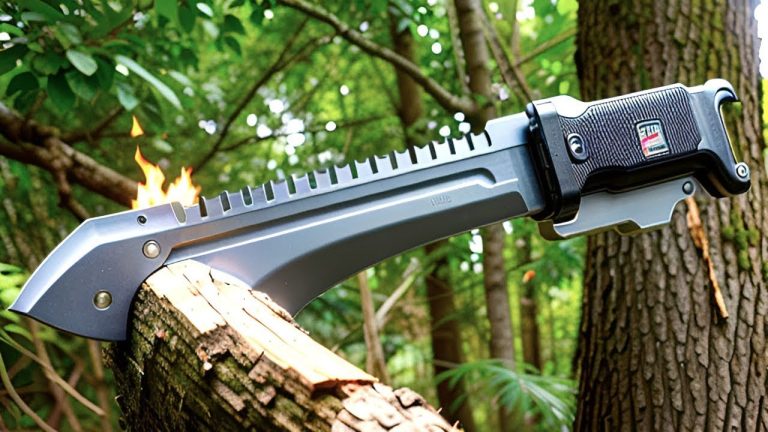Some of the links in this post may contain affiliate links for your convenience. As an Amazon associate I earn from qualifying purchases.
When it comes to prepping, age-related needs come at both ends of the spectrum. Small children and elderly parents can have very specific needs because their bodies just aren’t able to self-regulate the way a healthy adult in the prime of their life does. Elderly preppers have unique needs to take into consideration.
Even when the needs are the same, such as pureed food or diapering, they have to be approached differently when it’s an elderly person with a lifetime of being independent, or even an adult who has been dependent their entire life. They either have memories of not being this way, or they know other adults are not like this. It’s important to never make them feel like they are being made fun of for something that is beyond their control, whether that is a physical or mental attribute.
A Continuum of Preparedness Needs
There was a good discussion in the comments highlighting the diverse physical and mental capacities among older individuals. It’s important to note that a person in their late 70’s might have superior mobility compared to a person in their 60’s. This article presents preparedness needs on a continuum of care. Age alone does not dictate placement on this continuum.
As with any preparedness information, it’s essential to think critically and tailor strategies to your specific situation.
Get Paperwork in Order
One of the key items to do in advance is paperwork. Try to have copies of these important documents:
- Will
- Advanced Directives / Do-not-resuscitate order (DNR), if applicable
- Medical and financial powers of attorney
- The front page of their passport
- Copies of drivers licenses, insurance, and other basic IDs
The truth is that these are good to have on hand largely in case something happens and they lose their wallet or purse, especially while traveling. (It would be a good idea for you to leave a complete set of all your IDS and basic legal documents with them for the same reason.)
In addition to Advanced Directives/DNR for the state they live in, it’s a good idea to have one for any state you reasonably expect the to visit or travel through. (DNRs are different in different states and specify what should be done in a medical emergency in terms of pain medication, feeding, and life-extending measures.) Of course, also have copies of any prescriptions and diagnoses they have, and a complete list of all their doctors’ names, addresses, emails, and phone numbers.
Expert Tip: Create a Grab-n-Go Binder for your elderly loved one, and store it in an easy-to-find location. Keep copies of its contents scanned and stored in the Cloud or on a thumb drive OR have hard copies in your own binder.
4 Possible Living Arrangements
Single family home
Just because your elderly prepper is well enough to stay in their own home, doesn’t mean they will take care of emergency preparedness items. After all, most young people don’t either. Even small amounts of mental deterioration may make it hard for them to realize how dangerous certain situations are and what they need to do to be prepared. Sheer stubbornness may lead them to deny obvious danger signs.
There are certain emergencies most people are prepared for. Almost everyone knows the importance of smoke detectors and being prepared for a fire. Depending on the location, it may also be common to prepare for:
These familiar events are a good place to start if the idea of prepping is new to them. Let’s face it. It’s a lot easier to talk about preparing for a tornado than bringing up topics like bug out bags and how they can handle two weeks without access to medical care or their prescriptions.
Check smoke detectors
Smoke detectors are very nearly universal in all homes. Some, like the one linked in the last sentence, play a recorded message so you can direct family members what to do and where to go in a fire. Forgetting to check batteries in smoke detectors is almost as universal as owning them, so go ahead and do this when you visit elderly loved ones. They may find them hard to reach on their own, and testing the detector is also a good way to be sure they can still hear it. If they can’t, it’s time to switch to one with a strobe light.
Check emergency egress
Are there emergency ladders to get out of every bedroom in the house in a fire? If your parents have one, can they still safely climb down it? If they fall, how hard is the surface they will land on? Even if they can still safely climb down, you need to make sure they have a safe area under their window in case they fall to minimize the chance of breaking a hip or other bones.
Discuss emergency preparedness improvements
Once you have reviewed the preps that are in place, talk to them about any improvements you think they could use. As dull as it sounds, those might make a good gift. (Do you think they really want another coffee mug or dust collector?) A few suggestions for those are:
- A bucket of just-add-water meals to provide food for a week or more. These meals are very lightweight and as long as your loved one can heat water to boiling, this food will provide the nourishment they need.
- Large print road map. If the are still able to drive, this will be a huge help.
- A “Panic Alert” emergency dialer
- Waist pack, formerly “fanny pack”, to make sure they always have certain items with them, no matter what.
- Small LED flashlights in each room. Velcro these to tabletops or other handy locations to make sure they don’t easily get lost.
- Fashionable reading glasses, for the ladies.
- A Kindle loaded with books, both for entertainment and reference. It’s easy to change the font size, so this really is a must-have for anyone with vision issues.
You can also talk about the need to improve their tornado/hurricane/earthquake/whatever preps. Even if they aren’t open to all your suggestions, they are still adults and you need to respect their choices, even ones you know aren’t smart, as long as they aren’t endangering anyone else.
Evacuating
In an emergency, elderly loved ones who are living on their own, should be able to pack for an evacuation, but will almost certainly need an evacuation checklist to work from. Create a list with them (in a large font!), post 1 or 2 copies in handy locations, then review it with them every six months or so to keep up with their health. You don’t want to have their cane on the packing list, only to end up at your destination and find that they are struggling without their walker. Put the list inside a plastic sheet protector with a dry erase pen and a facial tissue. The dry erase pen can write on the sheet protector, and the tissue can be used to wipe it off, making the packing list reusable.
TIP: I’ve written an entire, easy to read manual on the subject of Emergency Evacuations.
Pets
It’s very possible that your loved one will have a pet, and at the top of the list of their concerns will be caring for that pet in an emergency and knowing it will be taken care of. Please spend some time making sure grandma or grandpa doesn’t have to worry about getting food and other supplies via a delivery service like Chewy.com, and if the worst happens, who will take care of their pets when they aren’t able to do so.
Apartment living
Once your relatives can no longer care for a yard or remove snow from the driveway and sidewalk, it is probably time for them to move into a senior apartment, particularly if no one lives close enough to help. Their emergency preparedness needs will change when this happens. For example, even if they can still use an emergency ladder, it is time to replace it with something less physically taxing.
Downsizing
Part of moving from a home to an apartment is downsizing. (Note: They will have to get rid of a lot of stuff, some of which may be useful to you in your preps. Items I bought from an elderly woman moving into assisted living included wool throw blankets, high-quality hand-powered kitchen gadgets, cigarette lighters from back when they were daily use items, and really good gardening tools.)
We all collect more stuff than we need, and your loved one may need help in sorting through their own household goods. If possible, and if there’s an urgent need for cash, help them organize and hold a yard sale.
Revisit paperwork
With downsizing, it’s a good time to review their paperwork. Some of their doctors may change when they move, so be sure to check their list of doctors both right after they move and a few months later, when they have settled in a bit more. It’s possible you may be the one to seek out new doctors, so be ready to ask for referrals and do some research in order to find the best care in this new location. Sometimes transportation can become an issue at this stage, and that is something to keep in mind as new doctors are found.
Pets and evacuating
Please see info under Single Family Home.
Assisted Living
When their condition deteriorates to the point that they can’t live on their own any more, they will need to move into assisted living. This option ranges from people with most of their abilities to live independently intact, just not enough to be on their own, to those with no ability to care for their daily needs. This move will also lead to another round of down-sizing.
Whatever their condition, an elderly person should be able to pack their own bag, or direct someone else to pack it. Some may need to have a very detailed checklist to follow while others may only need to be told “pack enough clothing for at least a week” and they will have everything they need, including toiletries, spare shoes, and sunscreen. You need to evaluate your loved one’s condition and give them the support they need to successfully pack themselves.
You should already have copies of all their prescriptions and diagnoses. Now it’s time to find out what medical equipment, if any, they will need. In this move, they shouldn’t need anything too large or expensive. The largest thing someone in assisted living is likely to need is an oxygen tank or wheelchair and keeping one or two spare tanks of oxygen handy. These don’t take a lot of space. Honestly, I have that much space dedicated to shoes I rarely wear.
Assisted living residents can also have their own bug out bags assembled and ready to go. These should contain copies of all the paperwork discussed in the last paragraph.
Nursing Home
By the time your elderly loved one is in a nursing home, you can’t count on them doing anything to help themselves in an emergency. At most, they will be able to pick up and carry their own emergency bag. Realistically, most people in a nursing home will be hard pressed to hold onto a bag while someone else pushes their wheelchair to the exit. You will need to have everything ready for them.
Few Personal Belongings
Unlike a person in their own home, their room will contain very few personal items. They will have downsized as much as they possibly can and are unlikely to have anything substantial beyond clothing, toiletries, and a few small items. You won’t need to have clothing pre-packed because you can take a bag and empty their drawers/closet into that bag as you are getting ready to leave. You can clear out the medicine cabinet/bathroom sink into a toiletries bag, making sure you have all their key medicines. The upside of having few belongings is that it takes only a few minutes to pack them up.
TIP: Prior to this move, be sure you have had discussions regarding personal belongings, real estate, and finances.
Special Equipment
You should already have copies of their key paperwork and medications (discussed above). At this stage in their lives, you should ask their doctors and the nurses who oversee them on a day-to-day basis to find out what else they need. Will they need a bedpan, catheters, IVs, or other medical equipment? If so, you can buy those and have them ready in an emergency or at least be prepared to make arrangements as soon as possible after leaving the facility. Check frequently with facility administrators, nurses, and orderlies to keep up with any deterioration in their condition.
Expert Tip:
Create a Grab-n-Go Binder for your elderly loved one, and store it in an easy-to-find location. Keep copies of its contents scanned and stored in the Cloud or on a thumb drive OR have hard copies in your own binder.
A Word About Incontinence
One Survival Mom reader shared this story about an elderly woman she helped care for:
This elderly woman complained of “some leaking” when she woke up in the mornings. When we eventually moved her out of her apartment, her mattress showed how much she had been in denial about her incontinence problems. This is something no adult wants to admit, but it’s all too common among the elderly. If there is a chance you will be evacuating or otherwise in the car for a long time, you should pack disposable incontinence underwear for them, especially if there won’t be easy access to bathrooms.
Incontinence issues affect many people of all ages, though.
Before an emergency evacuation, tell the truth: You will be in the car for a long time and may not be able to get to a bathroom quickly. You have Depends, or some other brand, handy and let them make the choice whether or not to use them. If they are having problems, they will probably go ahead and use the Depends IF they can do it without being made to feel embarrassed or shamed. If they won’t do it for this reason, they probably won’t wear one for any other reason.
If you are concerned about a possible incontinence problem and they won’t use Depends, cover your seats with bed sheeting fabric. It’s about $4/yard at the fabric store, is waterproof, and feels like flannel. (It’s also great as a diaper changing pad for toddlers.)
“Family means no one gets left behind or forgotten.”
The elderly aren’t the only special needs people who need to be considered in emergency preparedness plans. Most of us can’t fathom leaving behind a pet — how much more important is a grandmother, autistic child, or a bed-ridden loved one? Here are some other articles for every family with loved ones whose needs have been overlooked by most other survival and prepper blogs and websites.
If you have other, helpful suggestions for any of these special needs preppers, please leave your comments.
Originally published May 16, 2016
















